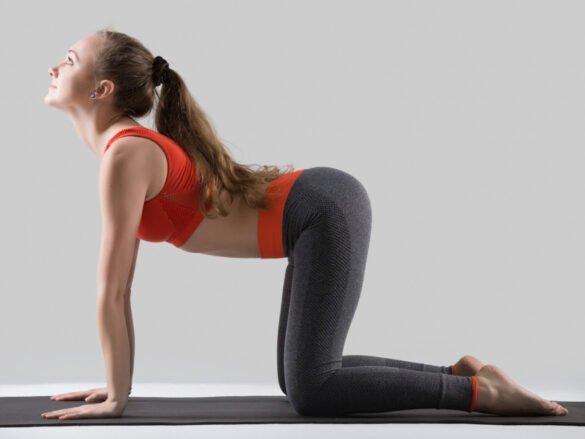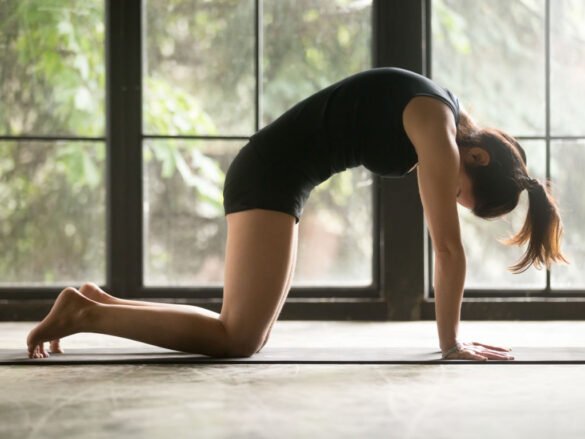Table of Contents
Ever felt like your body’s as stiff as a board after sitting at your desk all day? Or maybe you’ve tried to touch your toes and realized they might as well be on another planet? You’re not alone. In our modern world of endless screen time and sedentary lifestyles, flexibility has become something of a lost art. But here’s the good news: yoga poses for flexibility can be your gateway to reclaiming that fluid, pain-free movement you once took for granted.
Yoga isn’t just about pretzel-like poses you see on Instagram (though those are pretty impressive). It’s one of the most effective stretching exercises to increase flexibility, which is vital for overall physical wellness and posture improvement. When you practice targeted yoga poses for flexibility, you’re not just working on your range of motion—you’re reducing stiffness, supporting injury prevention, and literally unlocking new fitness goals that seemed impossible before.
What Does Flexibility Really Mean for Your Body?
Flexibility—or the ability of your muscles and joints to move through their full range of motion—is way more important than most people realize. Think about it: when was the last time you could reach the top shelf without wincing, or bend down to tie your shoes without your back protesting?
Improved flexibility isn’t just about showing off your splits at parties (though that’s fun too). It contributes to better posture, helps prevent injuries by decreasing muscle tension, and can reduce those everyday aches and pains that seem to multiply with age. According to health experts, greater flexibility supports other fitness goals by making exercise and daily movements easier and safer, and is directly linked to improved well-being and vitality.
When your muscles and connective tissues can lengthen properly, your entire body functions like a well-oiled machine. You’ll find yourself moving with more grace, experiencing less discomfort during daily activities, and feeling more confident in your physical abilities.
How Does Yoga Transform Your Flexibility?
Yoga is essentially a comprehensive system of stretching exercises that gently lengthen and release muscles, promoting flexibility throughout your entire body. But what makes it so special compared to just doing regular stretches?
For starters, yoga works on multiple levels. Different forms—from gentle restorative sequences to dynamic vinyasa flows—enhance flexibility in unique ways, often targeting those chronically tight areas like the hips, back, and shoulders that cause us the most grief.
But here’s where yoga really shines: it’s not just about the physical. Beyond improving your body’s range of motion, research shows that yoga improves mental focus, reduces stress, and deepens the mind-body connection. This holistic approach contributes to comprehensive physical wellness in ways that traditional stretching alone simply can’t match.
The breathing techniques integrated into yoga poses help your nervous system relax, which actually allows your muscles to release more effectively. It’s like having a conversation with your body instead of forcing it into submission.
The Ultimate 7 Yoga Poses for Maximum Flexibility
Ready to dive in? These seven poses are absolute game-changers when it comes to building flexibility. I’ve practiced these for years, and trust me—they work.
Cat-Cow Stretch: Your Spine’s Best Friend
This gentle flow is like a morning stretch for your entire spine. Starting on your hands and knees, you alternate between arching your back (cow) and rounding it (cat). The Cat-Cow Stretch improves spine flexibility, relieves tension that builds up from hunching over computers, and enhances posture in ways you’ll feel immediately.
What I love about this pose is how accessible it is. Whether you’re a complete beginner or have been practicing for years, Cat-Cow meets you where you are and delivers results every single time.
Downward-Facing Dog: The All-in-One Stretch
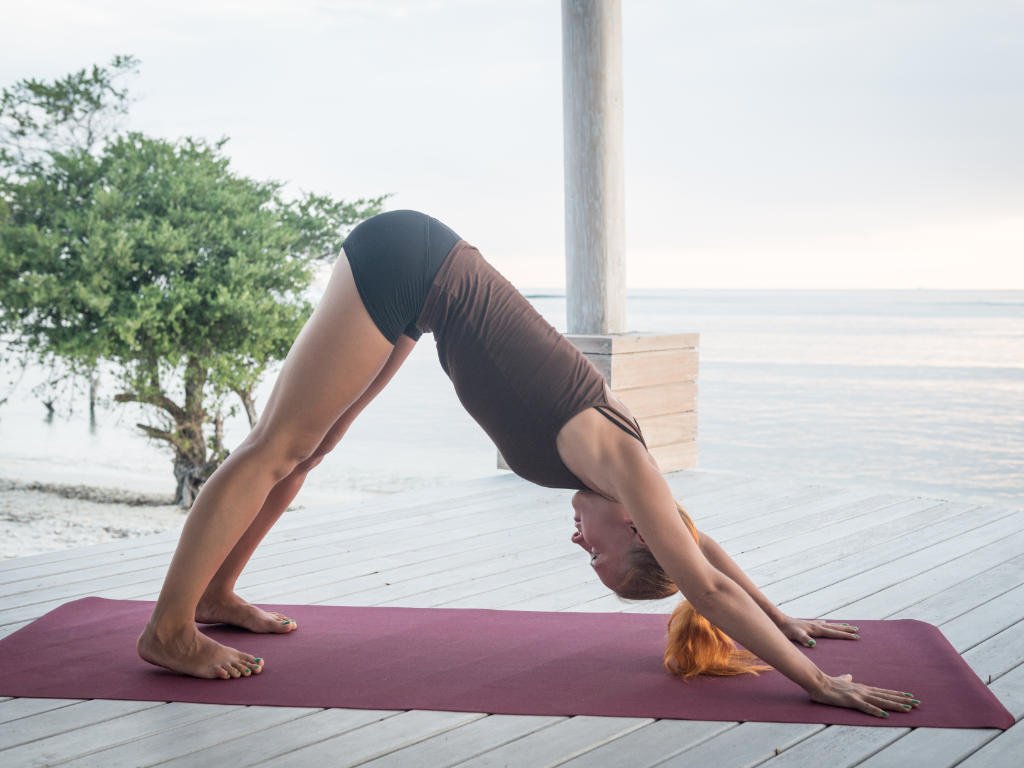
Ah, good old Downward-Facing Dog—probably the most recognizable yoga pose on the planet. This powerhouse targets your hamstrings, calves, and shoulders while lengthening your spine and boosting full-body flexibility.
The beauty of this pose lies in its versatility. Tight hamstrings? You’ll feel them opening up. Shoulder tension from carrying the weight of the world? This pose melts it away. It’s like getting a full-body tune-up in one simple position.
Forward Fold: Release and Let Go
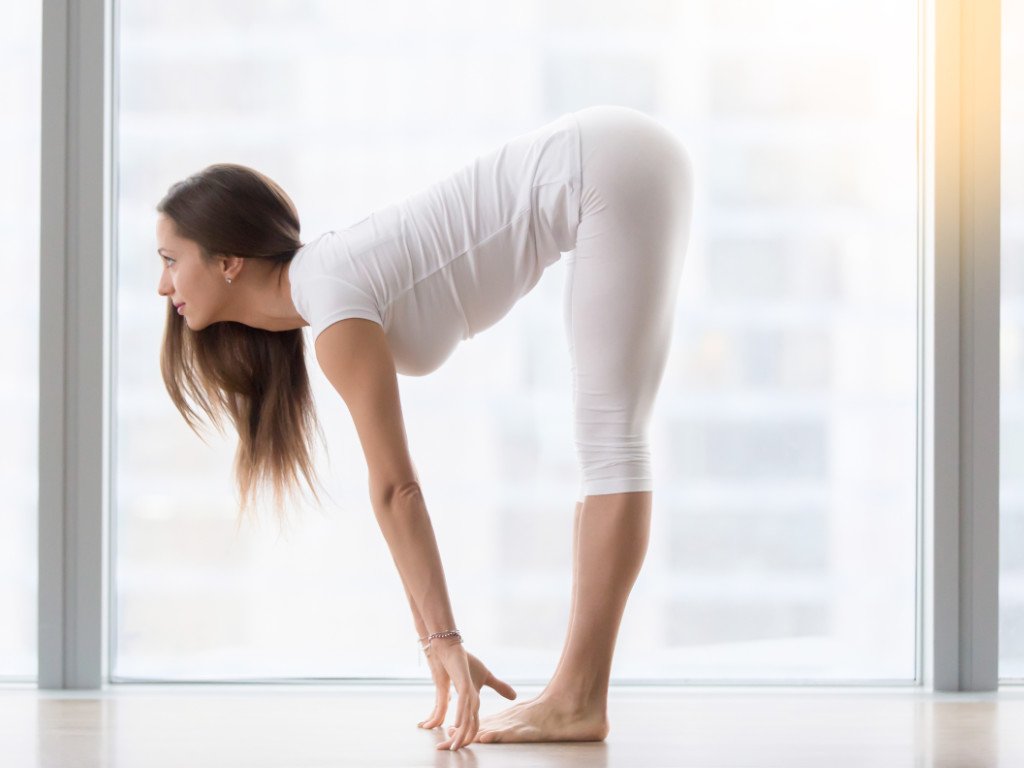
Sometimes the simplest poses are the most profound. The Forward Fold deeply stretches your back and hamstrings, relieving lower back tension and increasing leg flexibility in a way that feels incredibly therapeutic.
I often tell people that Forward Fold is where you literally “let it all hang”—your head, your arms, your worries. There’s something deeply satisfying about letting gravity do the work while you focus on breathing and releasing.
Triangle Pose: Open Up Your Entire Side Body
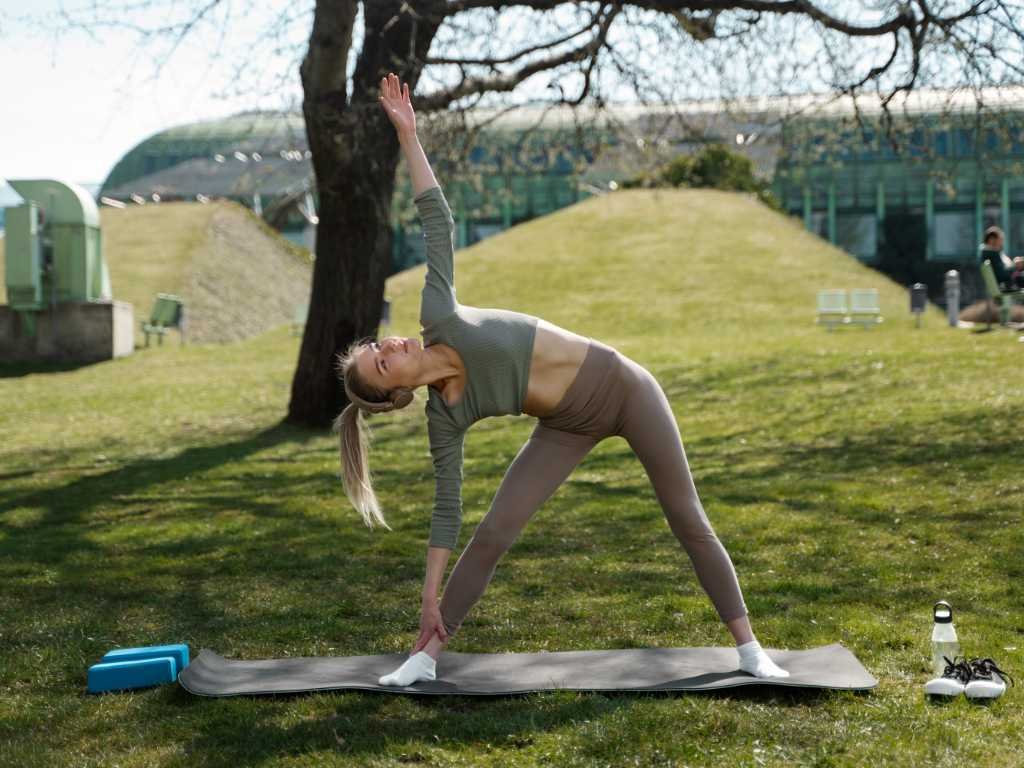
Triangle Pose is like a key that unlocks your entire lateral body. This pose expands your sides, stretches your hips, and improves spine alignment and posture in ways that feel both challenging and deeply satisfying.
What’s fascinating about Triangle is how it reveals imbalances you didn’t know you had. One side might feel completely different from the other—and that’s totally normal. It’s your body’s way of showing you where you need to focus your attention.
Pigeon Pose: Hip Opening Heaven
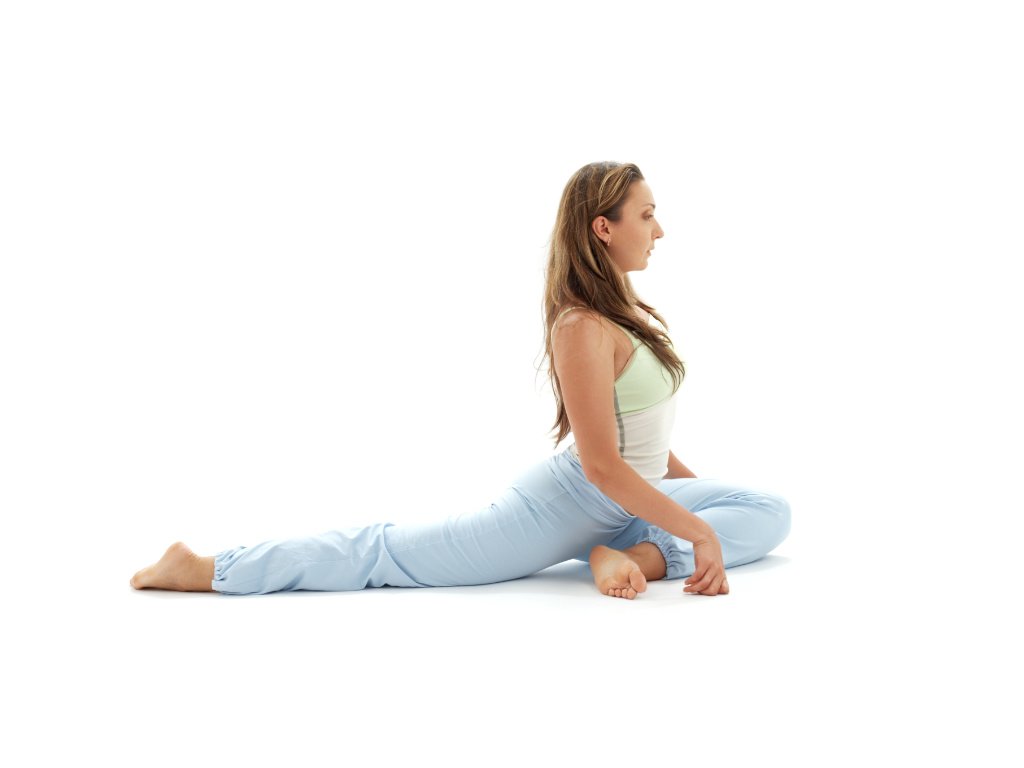
Seated hip opener – a beginner-friendly variation of Pigeon Pose for improved flexibility
If your hips could talk, they’d probably beg you to do more Pigeon Pose. This deep hip opener loosens glutes and hip flexors, increases lower body flexibility, and can dramatically improve your posture.
Fair warning: Pigeon can bring up some intense sensations (and sometimes emotions—our hips store a lot of tension). But stick with it. The release you’ll feel afterward is absolutely worth any temporary discomfort.
Cobra Pose: Strengthen and Lengthen Your Back
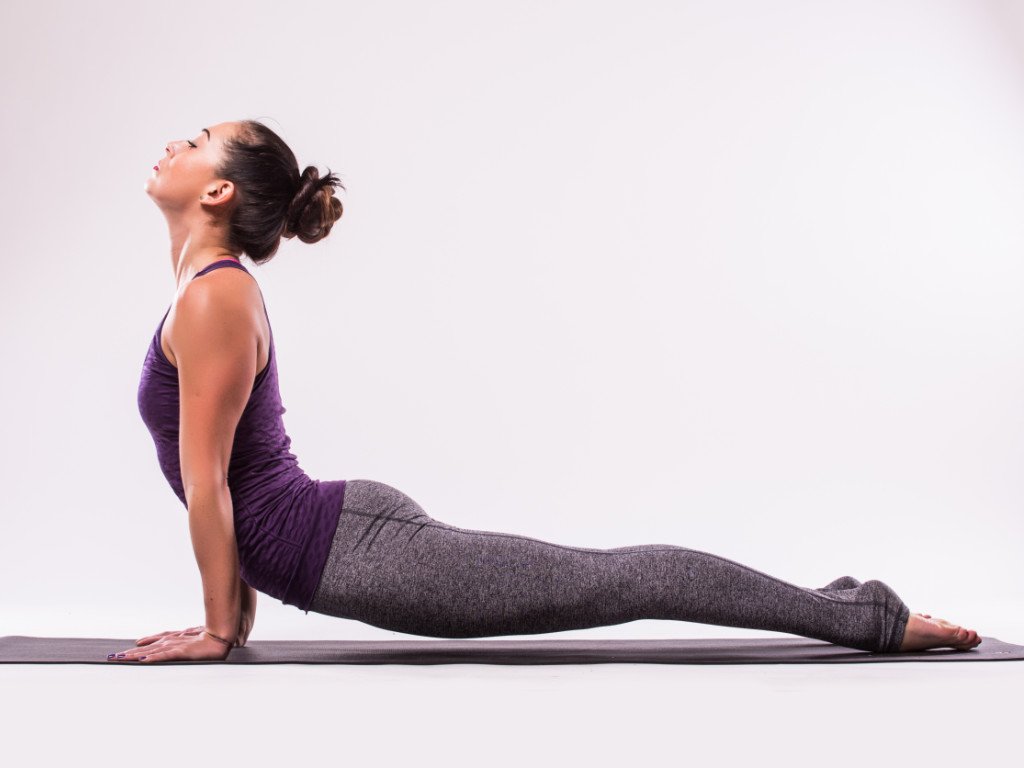
Cobra Pose is like giving your spine a gentle wake-up call. It strengthens and increases spinal flexibility while opening your chest and improving back extension. In our forward-hunched world, this backbend is essential medicine.
Start small with Cobra—you don’t need to look like you’re auditioning for Cirque du Soleil. Even a gentle lift can provide significant benefits for your spine health and posture.
Seated Forward Bend: Calm Your Mind While Stretching Your Body
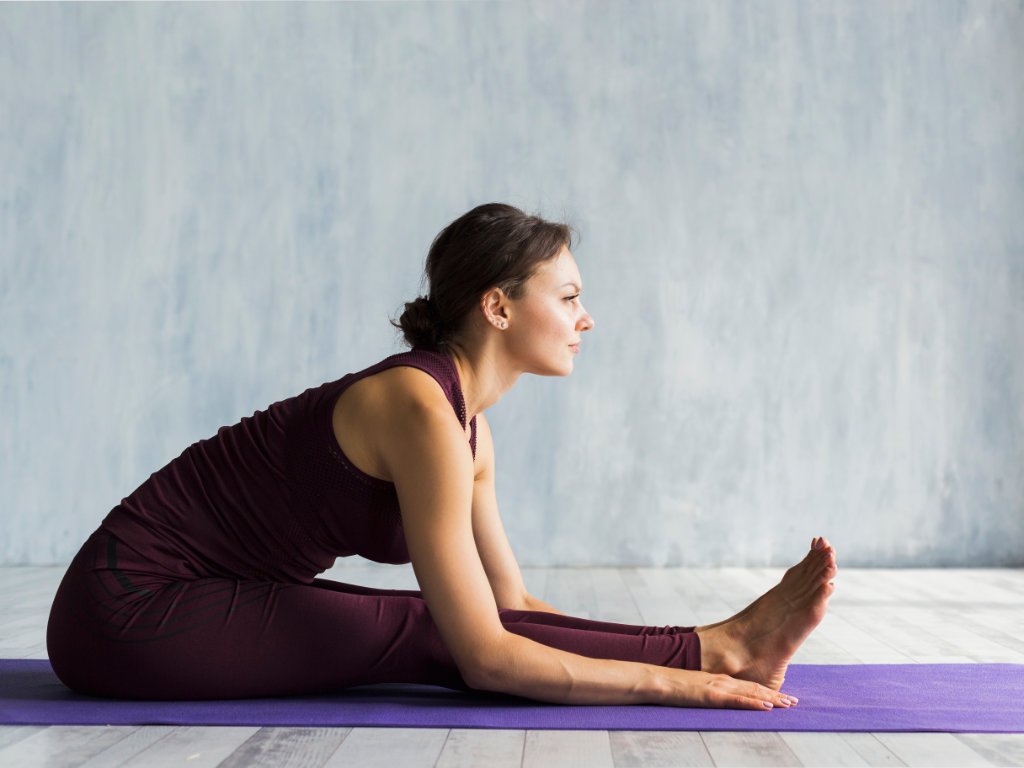
The Seated Forward Bend is meditation in motion. This pose stretches your legs and back while calming your mind and reducing stiffness throughout your lower body. There’s something incredibly grounding about folding inward and turning your attention inward too.
Studies suggest that forward bends activate the parasympathetic nervous system, which is responsible for rest and relaxation. So you’re not just stretching—you’re actively helping your body shift into recovery mode.
How Should You Practice These Poses for Best Results?
Frequency: Consistency Beats Intensity
Here’s the thing about flexibility—it’s not about dramatic one-time efforts. Aim for 3–5 sessions per week, holding each pose for at least 30 seconds. Your body responds much better to regular, gentle encouragement than occasional intense sessions.
I’ve found that even 15-20 minutes of consistent practice yields better results than hour-long sessions once in a blue moon. Your muscles have memory, and they need regular reminders of what you’re asking them to do.
Alignment: Quality Over Quantity Every Time
This cannot be stressed enough—focus on safe, correct posture in every pose for maximum benefit and injury prevention. It’s tempting to push deeper into poses, but proper alignment will take you much further in the long run.
If you’re unsure about your form, consider taking a few classes with a qualified instructor or checking out reputable online resources that provide detailed alignment cues.
Breathe Your Way to Deeper Stretches
Pair your stretches with slow, deep breaths to enhance muscle release and activate your body’s relaxation response. Your breath is like a key that unlocks deeper levels of flexibility.
When you hold your breath (which we all tend to do when things get challenging), your muscles tighten up as a protective mechanism. But when you breathe deeply and steadily, you’re essentially telling your nervous system that it’s safe to let go.
Listen to Your Body—It’s Smarter Than You Think
Listen to your body—avoid forcing any stretch and progress gradually to prevent overstretching or injury. Your body has an innate wisdom about what it needs and when. Some days you’ll feel more flexible than others, and that’s completely normal.
Pain is never the goal. Gentle stretching sensations? Yes. Sharp, shooting pains? Absolutely not. Learn the difference, and your body will thank you for years to come.
Why Should You Make Yoga Part of Your Daily Routine?
Integrating yoga poses for flexibility into your wellness routine isn’t just about becoming more bendy (though that’s a nice side effect). It’s about creating a sustainable practice that supports your overall physical wellness and quality of life.
Consider balancing your yoga practice with strength training and cardio exercises for truly holistic physical wellness. This combination creates a well-rounded fitness approach that addresses strength, cardiovascular health, and flexibility.
You might also want to explore local yoga classes for that sense of community and professional guidance, or dive into reputable online platforms that offer structured programs. The key is finding what works for your lifestyle and sticking with it.
Here’s a secret: even short sessions of 15–30 minutes can make a lasting difference when practiced consistently. You don’t need to become a yoga fanatic to reap the benefits—just someone who shows up regularly for their body.
What Are the Long-Term Benefits You Can Expect?
When you commit to regular yoga poses for flexibility, you’re essentially investing in your future self. The benefits extend far beyond just being able to touch your toes (though that’s pretty awesome too).
Improved posture is often one of the first things people notice. As your flexibility increases and your body learns to move more efficiently, you’ll naturally stand taller and move with more confidence. This can have a profound impact on how you feel about yourself and how others perceive you.
Injury prevention is another massive benefit that becomes more important as we age. Flexible muscles and joints are more resilient and less prone to strain during daily activities or exercise. It’s like having a built-in insurance policy for your body.
The mental and emotional benefits are equally compelling. Regular yoga practice has been linked to reduced stress, improved sleep quality, and better emotional regulation. When you take time to connect with your body through mindful movement, you’re also nurturing your mental health.
How Does Flexibility Connect to Your Overall Wellness?
Flexibility isn’t just about physical movement—it’s deeply connected to your overall approach to physical wellness. When you can move freely and without pain, you’re more likely to stay active throughout your life. This creates a positive cycle where movement begets more movement.
Consider how flexibility impacts other areas of your health routine. Better flexibility can improve your performance in cardio workouts, make strength training safer and more effective, and even support better sleep quality by reducing physical tension.
The mind-body connection developed through yoga can also enhance other wellness practices like meditation and stress management. It all works together synergistically to create a more balanced, healthy you.
What Does Science Say About Yoga and Flexibility?
The research on yoga and flexibility is pretty compelling. Studies have shown that regular yoga practice can significantly improve flexibility, balance, and strength while also reducing chronic pain and improving quality of life.
What’s particularly interesting is that the benefits extend beyond just the physical. Research suggests that yoga practice can improve body awareness, reduce inflammation, and even support better immune function. It’s like getting multiple health benefits rolled into one practice.
The beauty of yoga is that it meets you where you are. Whether you’re dealing with chronic stiffness, recovering from an injury, or simply wanting to maintain your mobility as you age, there are modifications and variations that can work for your specific situation.
Frequently Asked Questions About Yoga and Flexibility
How Long Does It Take to See Results from Yoga?
Most people notice some improvement in flexibility within 2-4 weeks of consistent practice. However, significant changes typically occur after 2-3 months of regular practice. Remember, everyone’s body is different, and factors like age, starting flexibility level, and consistency all play a role.
Can Yoga Help with Back Pain?
Absolutely! Many of the yoga poses for flexibility specifically target the muscles that contribute to back pain. Poses like Cat-Cow, Forward Fold, and gentle backbends can help alleviate tension and improve spinal mobility. However, if you have chronic back pain, it’s always wise to consult with a healthcare provider before starting any new exercise program.
Is It Normal to Feel Sore After Yoga?
Some mild muscle soreness is normal, especially when you’re first starting out or trying new poses. This is different from sharp pain, which should never be ignored. The soreness should feel like the “good” kind you get after a workout, not the “uh-oh, I think I hurt something” kind.
How Often Should I Practice Yoga for Flexibility?
For optimal results, aim for 3-5 sessions per week. Consistency is more important than duration—20 minutes three times a week will serve you better than one 90-minute session weekly. Your muscles need regular reinforcement to maintain and improve flexibility.
Can I Do Yoga If I’m Really Inflexible?
This is probably the most common concern I hear, and here’s the truth: being inflexible is exactly why you should do yoga! Every expert was once a beginner. Yoga is designed to meet you where you are and help you progress gradually. Use props, modify poses, and remember that your flexibility will improve with consistent practice.
The journey toward greater flexibility through yoga poses for flexibility isn’t just about achieving certain positions or impressing others—it’s about creating a deeper relationship with your body and supporting your long-term health and vitality.
Whether you’re looking to complement your existing fitness routine, support your overall wellness goals, or simply feel better in your own skin, yoga offers a path that’s both challenging and nurturing.
The poses I’ve shared are just the beginning. As you develop your practice, you’ll discover which poses your body craves most and how to modify them to suit your unique needs. Remember, this isn’t about perfection—it’s about progress, patience, and showing up for yourself consistently.
Starting a yoga practice for flexibility is one of the best investments you can make in your future self. Your body will thank you, your posture will improve, and you might just discover that the flexibility you develop on the mat extends into other areas of your life as well.
So grab a mat (or a towel), find a quiet space, and begin this beautiful journey toward greater flexibility and physical wellness. Your body is ready when you are.



